The mobile food industry is booming. With the global market projected to reach USD 4.96 billion by 2033, growing at a CAGR of 7.3%, food entrepreneurs are eyeing mobile setups as lean, high-margin entry points into the F&B sector. But when it comes to food cart vs food truck, which gives you the upper hand in profitability?
Both models promise flexibility, low overhead, and faster go-to-market timelines than traditional restaurants. However, their profit potential, operational complexity, and scalability differ drastically.
So, which one should you choose? This guide breaks down the profit margin differences, startup costs, and day-to-day realities of both models to help you make the best choice.
Understanding the Mobile Food Market
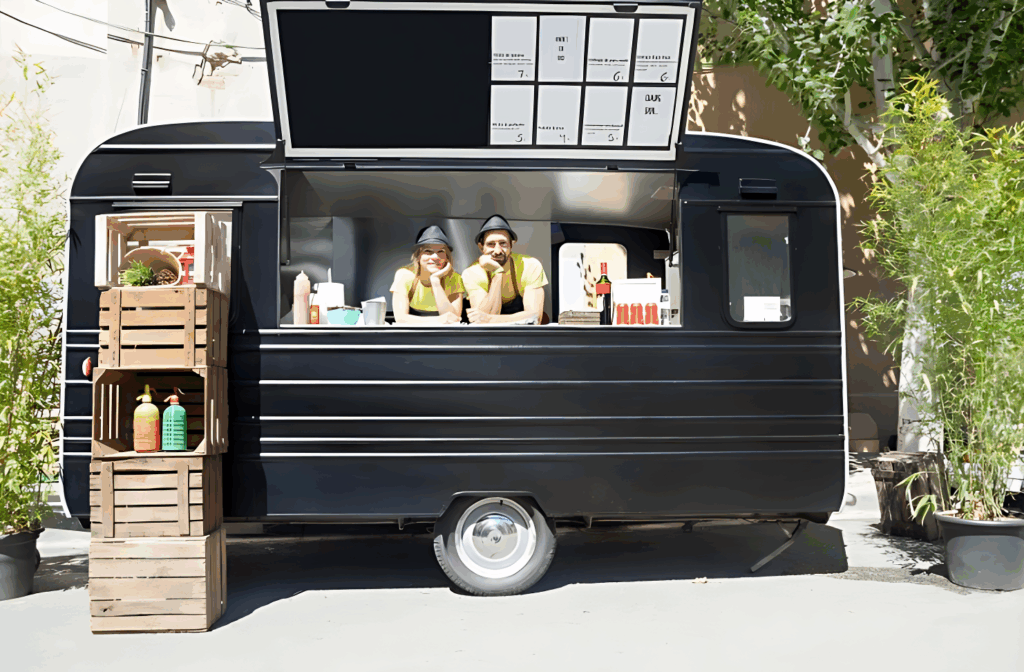
The mobile food sector comprises different types of businesses, from simple food carts to high-tech food trucks with full commercial kitchen setups. Both bring delicious food straight to customers without the overhead costs of regular restaurants. But they work differently, cost different amounts, and make different profits.
What Are Food Carts?
Food carts are small mobile units that usually stay in one spot or move between several locations. Most food carts keep their menus short, which helps them work faster and need less equipment. This simplicity lets owners focus on making great food items instead of dealing with complicated logistics.
Here are the main benefits of food carts:
- Lower costs to start and run
- Easier to manage daily operations
- Less paperwork and permits are needed
- Can build a strong, regular customer base in one area
How Food Trucks Work
Food trucks give you more space and freedom than food carts. These mobile restaurants can drive to different spots, follow where customers are, and work at special events. The extra space fits more kitchen equipment, holds more food, and lets you serve bigger menus. But this freedom costs more money and creates more rules to follow.
Key advantages of food trucks include:
- Can move to find the best customers
- More menu options are possible
- Higher daily sales potential
- Better for building a brand across the city
How Much Money Do You Need to Start
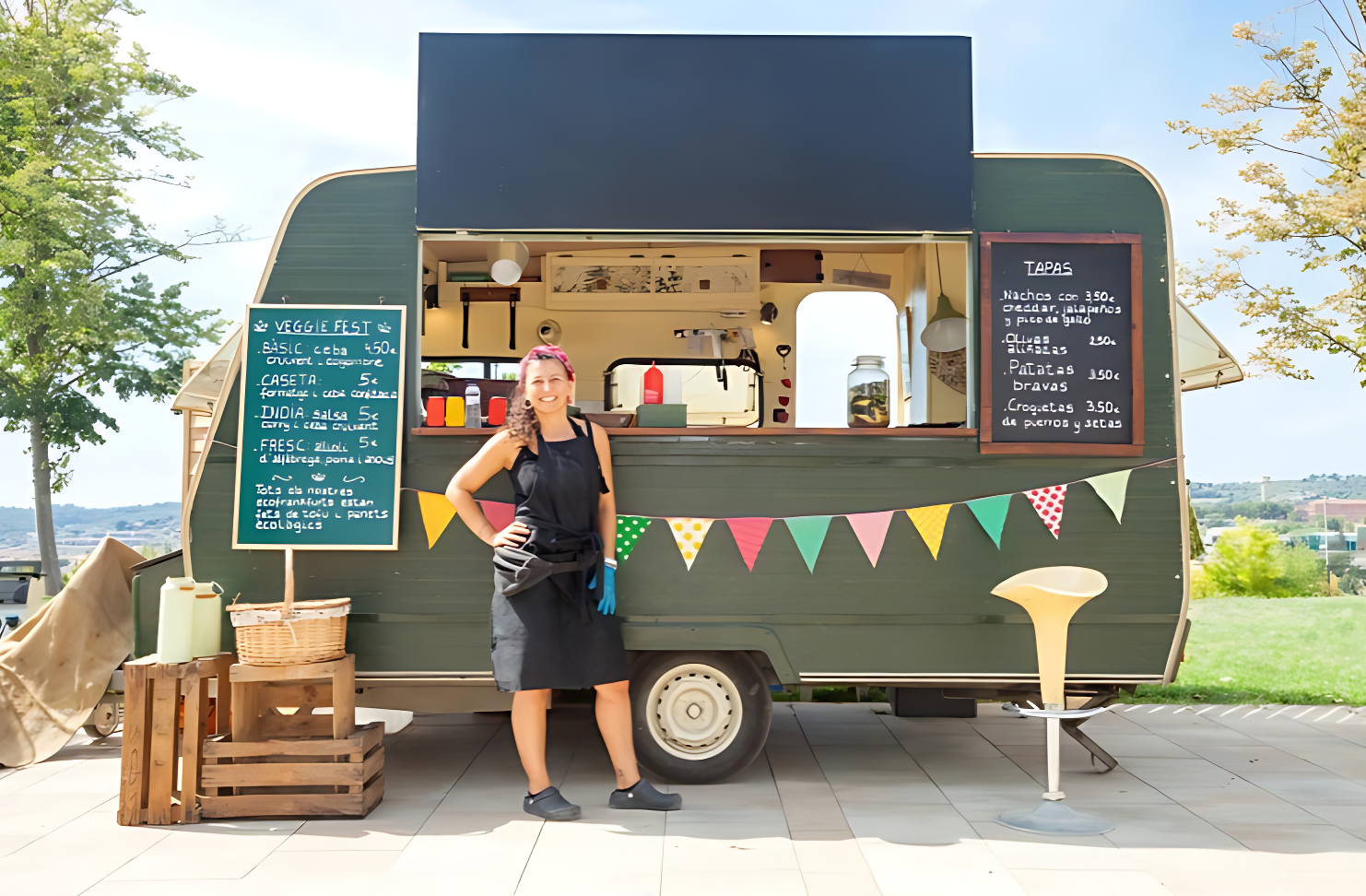
Starting either business requires different upfront costs. Understanding these startup costs helps you plan better and avoid running out of cash early.
Food Cart Startup Costs
Starting a food cart business needs much less money than a food truck business. New food carts cost between $15,000 and $40,000, while used ones can cost as little as $5,000. You’ll need basic equipment like heating elements, small fridges, and safety gear. When you add permits, insurance, and your first batch of food, total startup costs usually run $25,000 to $60,000.
Food carts have fewer surprise costs during setup. Most cities need fewer permits for food carts, which saves money and gets you started faster.
Food Truck Investment Needs
Food truck owners need much more money to start. New food trucks typically cost $80,000 to $200,000, depending on size and equipment. Used trucks range from $40,000 to $100,000 but often need more money for equipment fixes and upgrades.
Kitchen equipment costs a lot, including commercial stoves, deep fryers, grills, fridges, and other tools for bigger menus. The initial investment often reaches $100,000 to $250,000 when you include permits, insurance, branding, and money to keep the business running.
Monthly Costs to Keep Running the Business

Once you’re open, both businesses have ongoing costs that affect how much profit you make each month.
Food Cart Monthly Expenses
Food carts cost less to run each month. Gas costs are small since most stay in one location or nearby areas. Insurance costs about $2,000 to $4,000 annually, much less than food truck coverage. Repairs are simpler because fewer parts can break, and space constraints are limited.
Many food cart owners work alone or need very few helpers, keeping labor costs low. The small space naturally keeps things simple and costs down.
Food Truck Operating Expenses
Food truck operations cost more to run every month. Gas can cost $500 to $1,500 monthly, depending on how much you drive. Insurance typically costs $4,000 to $8,000 annually because of the higher risks of driving around.
Repair costs are much higher because of complex systems, fridges, generators, and regular truck maintenance. These operational costs directly hurt your profit margin, and you need to watch carefully to stay profitable.
How Much Money Can You Make Eventually?

Understanding the money-making potential of both businesses helps you set realistic goals and plan your business growth.
Food Cart Money-Making Potential
Food carts usually make $200 to $800 per day, depending on location, prices, and customer traffic. The short menu often means faster service and more customers served during busy times. Regular customers like the consistency and quick service that food carts provide.
Good food cart operations often make 60% to 70% profit on each item because of lower costs. However, a small space and fewer menu choices might limit total monthly revenue.
Food Truck Revenue Opportunities
Food trucks can make more money through different income sources. Daily sales can range from $500 to $2,000, with great locations and events making even more. The ability to cater special events, corporate lunches, and festivals creates extra money beyond regular daily sales.
Food truck owners can use social media marketing better because they move around, building brand awareness in multiple areas. This movement helps reach different target audience groups and adapt to changing markets.
INDUSTRY INSIGHT
| According to data, food trucks make somewhere between $250,000 and $500,000 per year, while food carts typically make $100,000 to $200,000 annually. But when you look at profit margin percentages, food carts often beat food trucks with 65% to 70% gross margins compared to food trucks’ 55% to 65% margins. This happens because food carts have lower costs and simpler operations. |
Location and Mobility

Whether you settle at a place or move around can have a big impact on your income and the number of customers you serve.
Food Cart Location Strategy
Food carts work best in busy, steady locations where customers expect reliable service. Universities, office buildings, and train stations provide steady customer flow without needing to move around. Staying in one place helps build customer loyalty and creates predictable income.
Studying foot traffic becomes crucial for food cart success since you can’t easily change locations. Proper planning when picking your spot can determine long-term success more than anything else.
Food Truck Moving Advantages
Food trucks give you a lot of flexibility when following customers. Smart operators create routes that maximize efficiency by targeting business areas during lunch and residential areas during dinner. This movement helps meet demand changes and seasonal ups and downs.
Being able to work festivals, concerts, and special events provides income spikes that can really boost monthly revenue. However, this needs extra planning, permits, and operational complexity.
Menu and Equipment Choices
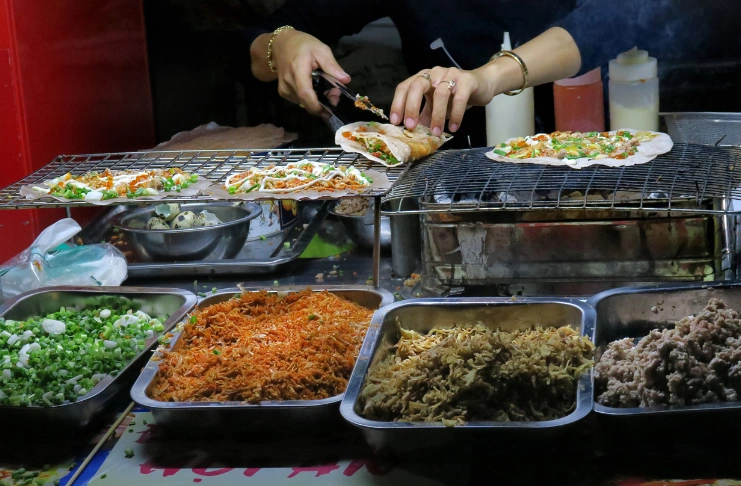
The food you can serve and the equipment you can use depend heavily on which format you choose.
Food Cart Menu Limits
A small space naturally limits the complexity of a food cart menu. Successful operations focus on 5 to 10 high-quality items that can be made quickly with minimal equipment. This limit actually helps many operators by forcing menu optimization and reducing food waste.
Popular food cart ideas include:
- Specialty coffee and drinks
- Gourmet hot dogs and sausages
- Tacos and ethnic street food
- Cookie dough treats and desserts
- Simple sandwiches and wraps
Food Truck Menu Freedom
Food trucks can handle bigger menus because of more space and equipment. Full mobile kitchen setups allow complex food production, including grilling, frying, and multi-step cooking processes. This flexibility allows for higher menu prices and serving different customer preferences.
However, bigger capabilities require more sophisticated inventory management, longer prep times, and higher staff skill requirements. The complexity can hurt efficiency if not managed properly.
Rules and Legal Requirements
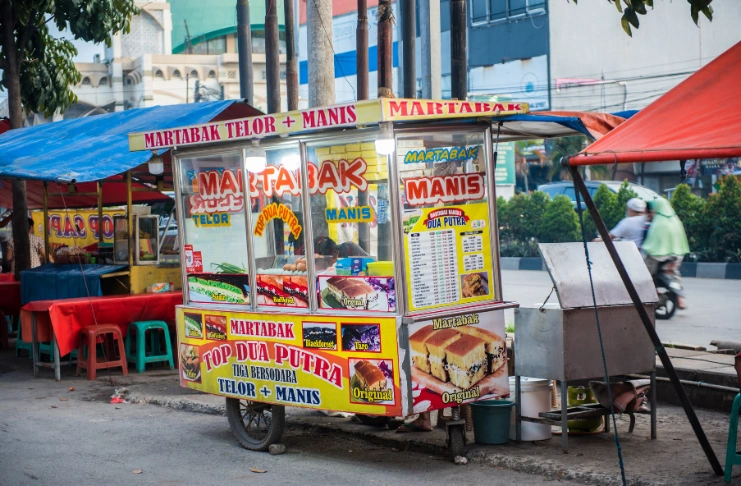
Both businesses must follow different rules and regulations that affect costs and operations.
Food Cart Rules
In most cities, food carts generally face simpler rules. Permits cost less and come faster. Health department inspections focus on basic food safety rules and equipment cleanliness. Staying in one place simplifies many compliance issues.
Food Truck Legal Requirements
Food truck business operations must deal with more complex rules. You often need multiple permit types, including mobile vendor permits, fire department approvals, and route-specific permissions. Legal issues can come from parking rules, noise limits, and territory restrictions.
Moving around requires following safety standards across multiple areas, increasing paperwork, and potential legal problems.
Building Your Brand and Marketing
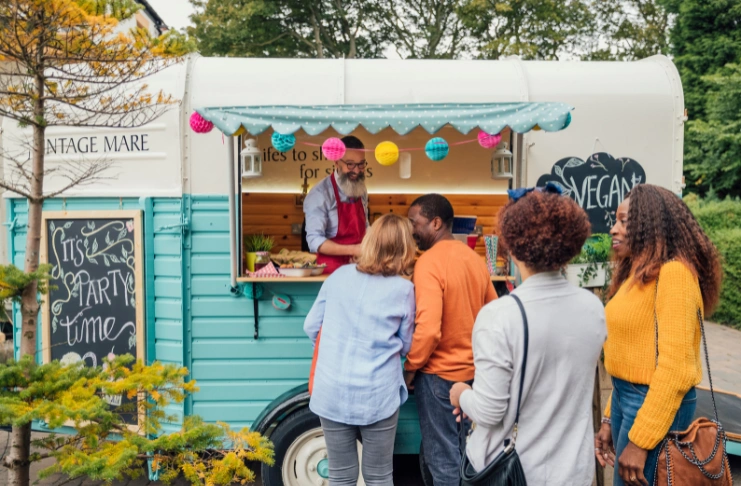
How you build your brand and attract customers differs significantly between the two formats.
Food Cart Branding Strategy
Food carts rely heavily on location-based brand recognition. Consistent quality and service build strong customer relationships in specific areas. Word-of-mouth marketing works really well because of regular customers and a limited geographic area.
Visual branding becomes crucial since food carts compete for attention in busy areas. Clear signs, attractive food presentation, and consistent brand messaging help attract new customers while keeping regular ones.
Food Truck Marketing Opportunities
Food trucks benefit from better marketing flexibility through moving operations. Social media marketing works particularly well as operators can announce locations, share menu updates, and engage with food lovers across different areas.
The novelty of food trucks often creates free marketing through customer social media posts and local news coverage. This broader brand exposure can speed up business growth compared to stationary food carts.
Money, Performance, and Profits

Understanding the financial realities helps set proper expectations and plan for success.
Food Cart Profit Analysis
Food carts typically break even within 6 to 12 months because of lower startup and running costs. The high-profit margin on individual items and lower overhead create strong cash flow for successful operations. Many operators report 25% to 35% net profit margins after all expenses.
The predictable nature of food cart operations allows for accurate money forecasting and steady growth planning. Less variation in daily sales helps maintain consistent profits.
Food Truck Financial Reality
Because of higher startup costs and operational complexity, food truck owners often need 12 to 24 months to become profitable. However, successful operations can make higher total profits because of increased revenue potential.
Net food truck profit margin typically ranges from 15% to 25% after accounting for all operating expenses.
The revenue ups and downs require more sophisticated financial management and larger cash reserves to handle seasonal changes and unexpected repair costs.
Growing Your Business

Both formats offer different opportunities for expansion and long-term growth.
Food Cart Growth Options
Food cart operations offer limited but focused growth opportunities. Successful operators can add more carts in different locations, creating a small fleet of mobile units. This approach keeps operational simplicity while increasing overall revenue and market presence.
Some food cart operators move to brick-and-mortar restaurants once they establish strong brand recognition and customer loyalty. The lower startup costs make this transition more financially feasible.
Food Truck Growth Strategies
Food truck business models provide more diverse expansion opportunities. Successful operators can add new trucks, develop catering services, or franchise their concept. The established brand recognition and operational systems support faster scaling.
Many food truck owners eventually open permanent restaurants, using their mobile success to get financing and establish customer bases for fixed locations.
Risks and Challenges

Every business has risks, but food carts and trucks face distinct challenges.
Food Cart Risk Factors
Food carts face concentrated location risk since success depends heavily on one spot or a limited route. Changes in foot traffic patterns, construction, or local rules can significantly impact revenue. The limited menu also creates risk if customer preferences change or competition increases.
Weather dependency represents another challenge, particularly for outdoor operations without adequate protection. Seasonal changes can dramatically affect daily sales and yearly profits.
Food Truck Risk Management
Because of their complex mobile systems, food trucks face mechanical and operational risks. Truck breakdowns, equipment failures, and maintenance issues can disrupt operations and hurt customer relationships. These challenges require larger financial reserves and backup planning.
Rule changes and permit issues pose ongoing risks as food trucks operate across multiple areas. Legal compliance requires constant attention and can impact operational flexibility.
Technology and Modern Tools
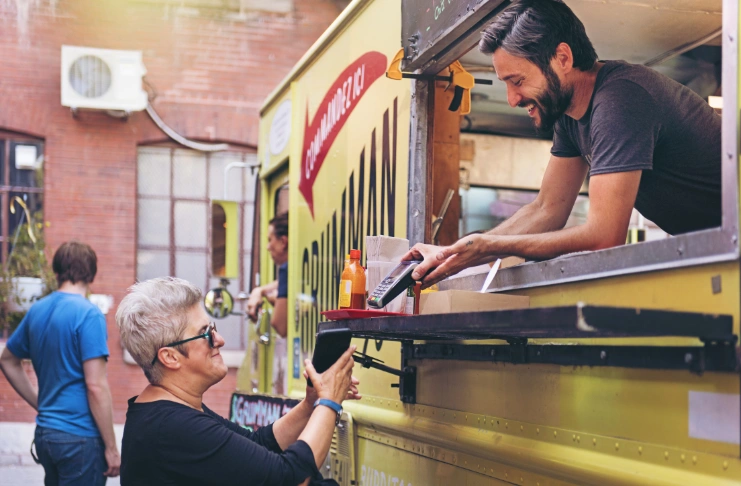
Modern technology can help both formats improve efficiency and customer experience.
Food Cart Technology Integration
Modern food carts increasingly use technology to improve operations and customer experience. Point-of-sale systems, mobile payment processing, and inventory management software help maximize efficiency within space constraints. Simple online ordering systems can reduce wait times and improve customer satisfaction.
Food Truck Digital Advantages
Food trucks benefit from more extensive technology integration opportunities. GPS tracking for customer location services, comprehensive sales systems, and advanced social media integration create competitive advantages. Mobile apps and online ordering systems work exceptionally well with the mobile food truck model.
Research and Planning
Success in mobile food service requires thorough research and planning, regardless of your chosen format.
Market research and location analysis are crucial for food carts and trucks. Understanding local competition, customer preferences, and rules guides important business decisions. Both formats benefit from analyzing foot traffic patterns, demographic data, and seasonal changes.
Location analysis differs significantly between formats. Food carts need a deep analysis of specific sites, while food trucks need a broader market understanding across multiple locations and customer segments.
So, Food Cart vs Food Truck, Which One is Better?

The choice between food carts and food trucks depends on your personal situation, available money, and business goals.
Consider these factors when deciding:
- Available startup capital and ongoing funds
- Risk tolerance and management experience
- Menu concept and complexity needs
- Local market conditions and regulations
- Long-term growth and expansion goals
Food carts offer lower barriers to entry, higher profit margins, and operational simplicity, making them ideal for first-time entrepreneurs or those with limited capital. Food trucks provide greater revenue potential, operational flexibility, and growth opportunities, but require higher initial investment and more complex management.
Both formats can be profitable with proper planning, execution, and market understanding. The key is choosing the option that aligns with your resources and business vision while meeting your local market’s needs.
Success in either format requires dedication, quality food, excellent customer service, and smart financial management. Start a food business that matches your strengths and resources, then focus on delivering great value to your customers every day.
Frequently Asked Questions
1. Is a food cart the same as a food truck?
No, food carts and food trucks are different mobile food formats. Food carts are smaller, simpler units that typically operate from fixed or semi-fixed locations with limited equipment and menu options. Food trucks are larger, self-contained mobile restaurants with full kitchen capabilities that can travel to multiple locations.
2. Is it better to have a food trailer or food truck?
Food trailers offer a middle ground between carts and trucks, providing more space than carts while requiring a separate vehicle to tow them. Food trucks are fully self-contained and offer greater mobility flexibility. The choice depends on your budget, operational needs, and local regulations.
3. What food cart makes the most money?
High-profit food carts typically focus on specialty items with high margins such as gourmet coffee, artisanal ice cream, ethnic street food, or organic ingredients-based meals. Success depends more on location, execution, and customer demand than specific food type.
4. What is the difference between a truck and a cart?
The main differences include size (trucks are larger), mobility (trucks are self-powered while carts may be pushed or towed), equipment capacity (trucks accommodate full commercial kitchens), and operational complexity (trucks have more systems and requirements).
5. What food business makes the most money?
Among mobile food businesses, successful food trucks generate higher absolute revenues ($200,000-$500,000 annually) than food carts ($100,000-$250,000). Still, food carts often achieve higher profit margin percentages due to lower operational costs.
6. Which food product business is most profitable?
High-margin food businesses include specialty beverages (coffee, smoothies), desserts, ethnic street food, and gourmet items. Profitability depends more on execution, location, and cost management than on specific product categories.
7. What is the best small food business to start?
Food carts represent one of the best entry-level food businesses due to lower startup costs, simpler operations, and faster break-even potential. However, the best choice depends on your capital, experience, and market conditions.
8. Which fast food business is most profitable?
Food trucks with efficient operations and prime locations typically achieve the highest profits among mobile options. However, food carts often provide a better return on investment due to lower initial costs and overhead expenses.
9. How much profit does a food truck make?
Successful food trucks typically generate 15-25% net profit margins, which, depending on revenue levels, operational efficiency, and cost management, translate to an annual profit of $30,000- $100,000.
10. What is the failure rate of food trucks?
Industry data suggests that 60-80% of mobile restaurant businesses fail within the first five years.
11. How many food trucks for 500 guests?
For events serving 500 guests, 2-4 food trucks are typically recommended, depending on service duration, menu complexity, and guest preferences. This ensures reasonable wait times and adequate food variety.
12. How long does it take to break even on a food truck?
Depending on initial investment, operational efficiency, and market conditions, most food trucks require 12-24 months to break even. Food carts typically break even faster (6-12 months) due to lower startup costs and operational expenses.





